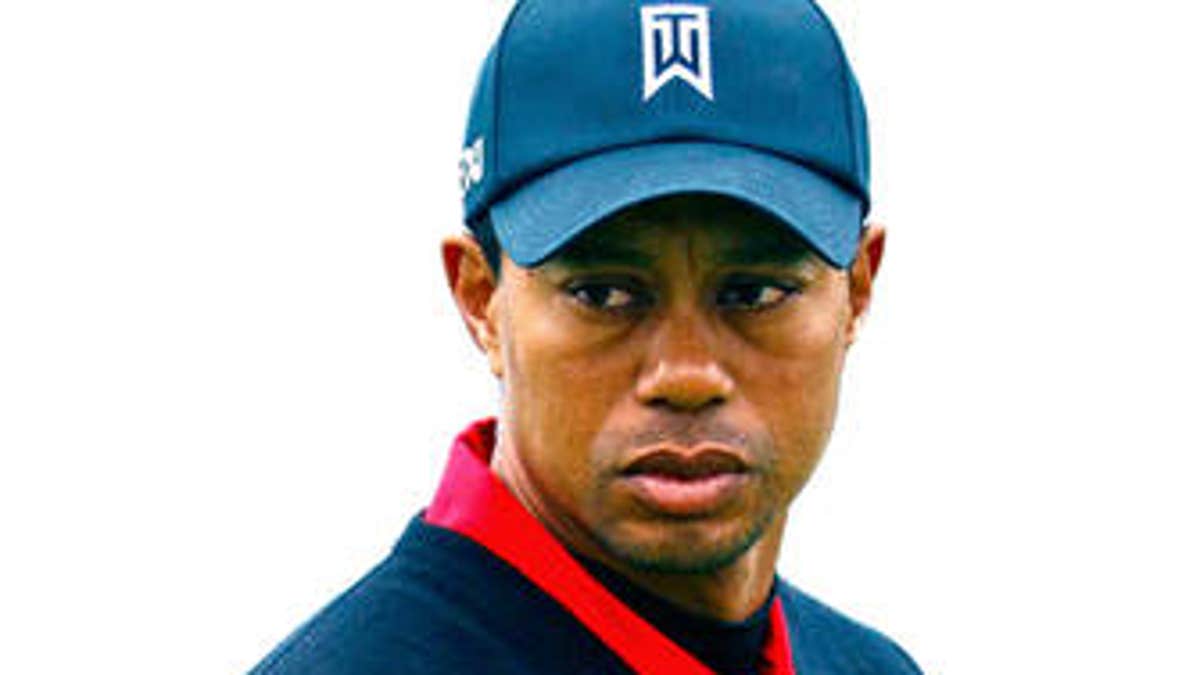
MARANA, Ariz. – Six years ago, Stephen Ames was turned from a golfer into a cautionary tale.
The Canadian's mistake was to dare question the celestialness of Tiger Woods ahead of the WGC-Accenture Match Play tournament.
"Anything can happen, especially where he's hitting the ball," Ames said.
Though it seemed innocent enough -- and, frankly, it wasn't an inaccurate analysis given Woods' struggles with the eccentricities of then-coach Hank Haney's swing theories -- the then-world No. 1 took exception to what he perceived as something bordering on insubordination.
"I just don't do that," he said tersely about the criticism.
Woods punished Ames with a virtuoso performance at La Costa, winning the first nine holes of their match to record the most lopsided win in the tournament's history, 9 and 8.
"You might say that," he later said with a grin when asked if he'd been motivated.
It was an episode that further expanded the Legend of Tiger -- enough to ensure Woods wouldn't again be called out by a peer.
But that was then, when his was by far the most feared name in golf.
Times have changed.
Now, ranked 19th in the world as he tries to resurrect his game from the mire of scandal, divorce and injury, Woods faces a 31-year-old Spaniard in Wednesday's first round of the Match Play.
And Gonzalo Fernandez-Castano has much more to say than Ames did.
In his career, Fernandez-Castano has made four cuts at majors, never finishing inside the top 30.
But the Spaniard -- who qualified for this event for the first time by winning the Singapore Open late last year -- likes his chances at the Dove Mountain course.
"I was quite happy to see my pairing," he said Monday.
"I don't think he's at his best, so it's a good opportunity.
"If I play well, I can beat him.
"I know I need to play good. He's a great match-play player. He's won this tournament three times. He has a very good match-play record, especially in his amateur days, not so good on the Ryder Cup.
"I think he's beatable."
Fernandez-Castano didn't stop there, doubting that Woods would beat Jack Nicklaus' record of 18 majors because, he said, younger players now "know what the feeling of beating Tiger is".
Woods must be starting to feel like Rodney Dangerfield.
His former coach, Butch Harmon, opined a few days ago that Woods' nerves "aren't as good as they used to be" after Phil Mickelson embarrassed him in the final round at Pebble Beach.
Can he get them to bite their tongues again?
And, if so, will this be the week?
Though a three-time champion, his record at this tournament in recent years isn't good: In his past two trips to Tucson, he's won only one match -- against little-known Aussie, Brendan Jones -- before losing to Tim Clark in the second round in 2009 and being bounced on the first day last year by Thomas Bjorn.
While Woods has been steadily improving since a third place finish at November's Australian Open, there are glaring deficiencies, exposed on Sunday afternoons.
In his season opener in Abu Dhabi, he was tied for the lead going into the final round but was easily beaten by England's Robert Rock, who had one previous win in his career.
Then Woods went to Pebble Beach and fizzled on the last day with a chance to win, shooting 75 while playing alongside champion Phil Mickelson, who beat him by a whopping 11 strokes.
At Pebble Beach Woods' weaknesses were obvious: chiefly, stone hands when it came to putting.
But there was also this: Woods hit it closer than anyone in the field from 175 to 200 yards -- averaging 17 feet -- but from 50-125 yards he was awful, averaging 31 feet, 10 inches away from the hole.
For most players, those numbers would be reversed.
Woods' coach, Sean Foley, however, isn't surprised.
"That makes sense," he said.
"Because he has been working on his swing in basically full motions at full speed.
"We have spent a lot of time on tee shots which is the opposite on the feel spectrum."
Foley's worked to fix what was most broken -- the driver -- and is making his way down.
He preaches patience.
"There is beautiful progress in his motion," he said.
"We only take it one step at a time. Tiger knows what he is doing. You cannot have a self-sustaining structure without a foundation."
So they continue to build that foundation.
Meanwhile, others continue to talk.
